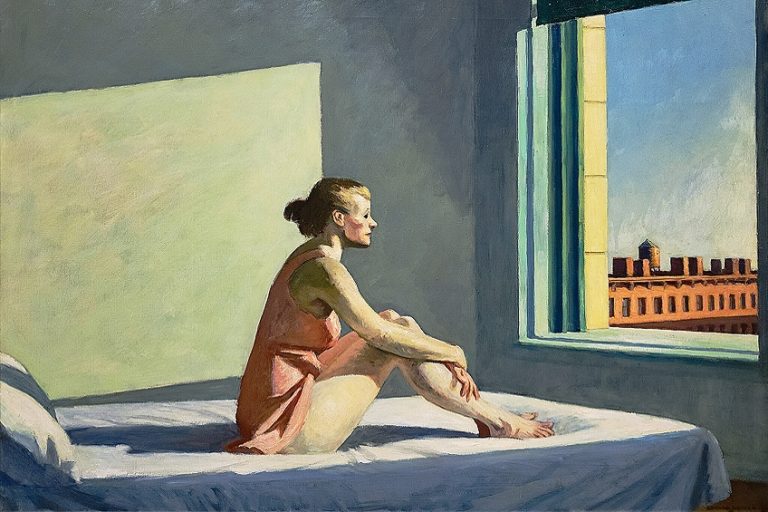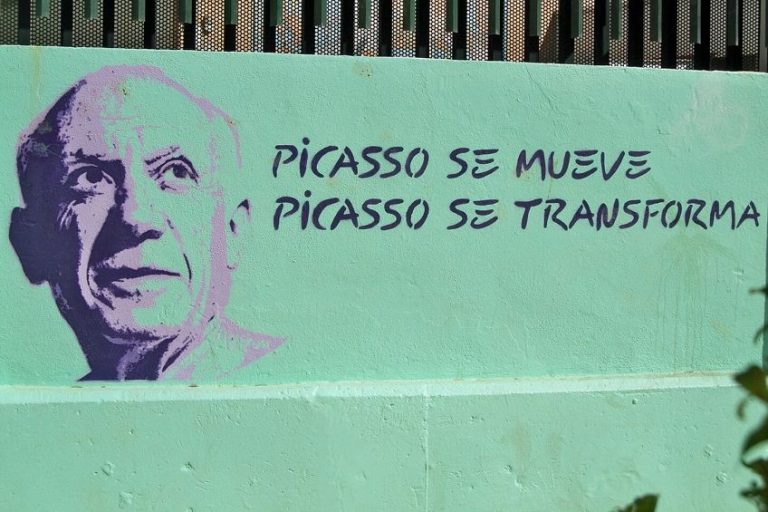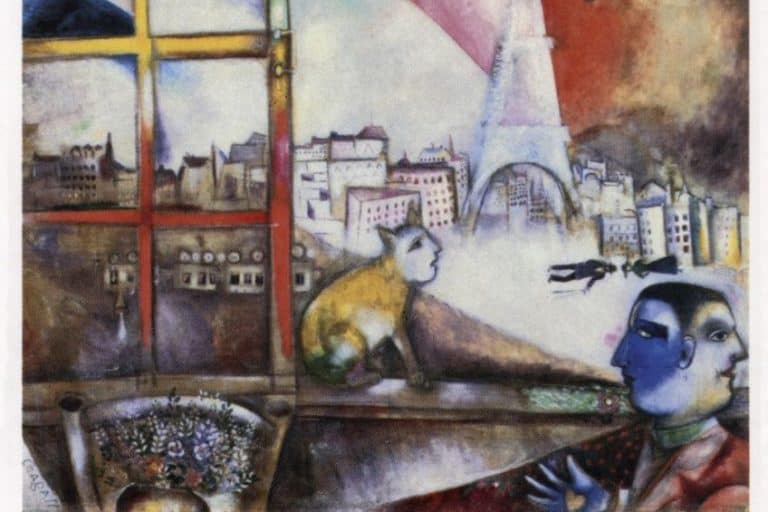Marie Antoinette Family Portrait by Élisabeth Vigée le Brun
The famous Marie Antoinette family portrait by Élisabeth Vigée le Brun has been known as a national treasure in France and a symbol of Queen Marie Antoinette’s motherhood during a time when her reputation was unsteady. In this article, we will take a closer look at this French painting, which is now housed and displayed at the Palace of Versailles.
Artist Abstract: Who Was Élisabeth Vigée le Brun?
Élisabeth Louise Vigée le Brun was a French artist mostly known for painting portraits. She was active during the 18th century. She was born on April 16, 1755, and died on March 30, 1842, in Paris, France. She started artistic training during her early preteen years at the encouragement of her father, Louis Vigée, who was also an artist.
She was a member of the Académie de Saint-Luc and became known as the portraitist for Queen Marie Antoinette.
She was married to Jean-Baptiste-Pierre le Brun, who was an art dealer and had a daughter. She and her daughter fled France during the French Revolution and lived in Italy, Austria, and Russia before returning to France over 10 years after.

Marie Antoinette and Her Children (1787) by Élisabeth Vigée le Brun in Context
| Artist | Élisabeth Louise Vigée le Brun |
| Date Painted | 1787 |
| Medium | Oil on canvas |
| Genre | Portrait painting (full-length) |
| Period / Movement | Rococo and Neoclassical |
| Dimensions | 275 x 216.5 centimeters |
| Series / Versions | N/A |
| Where Is It Housed? | Palace of Versailles |
| What It Is Worth | N/A |
Contextual Analysis: A Brief Socio-Historical Overview
Firstly, who was Marie Antoinette? She was born in Austria in Vienna, named Maria Antonia; her father was Francis I, the Archduke of Austria, and the non-Habsburg Holy Roman Emperor, prior he was the Duke of Lorraine and Bar located in France, and the Grand Duke of Tuscany, he was married to Maria Theresa, titled as the Habsburg Empress, who was also known as a significantly powerful ruler.
Maria Theresa married off Marie Antoinette in 1770 to the French Louis-Auguste XVI, known as the Dauphin of France and heir to the throne after Louis XV.
This was a marriage by proxy, which means that one of the married partners is not present and someone stands in for them. In the case of Marie Antoinette, she was reportedly married in Vienna at the Augustinian Church in April 1770 and met Louis XVI in May 1770. Her mother arranged the marriage to secure the relationship between the French and ultimately have peace between the countries. Upon Marie Antoinette’s arrival in France, there was a public second wedding at the Palace of Versailles.
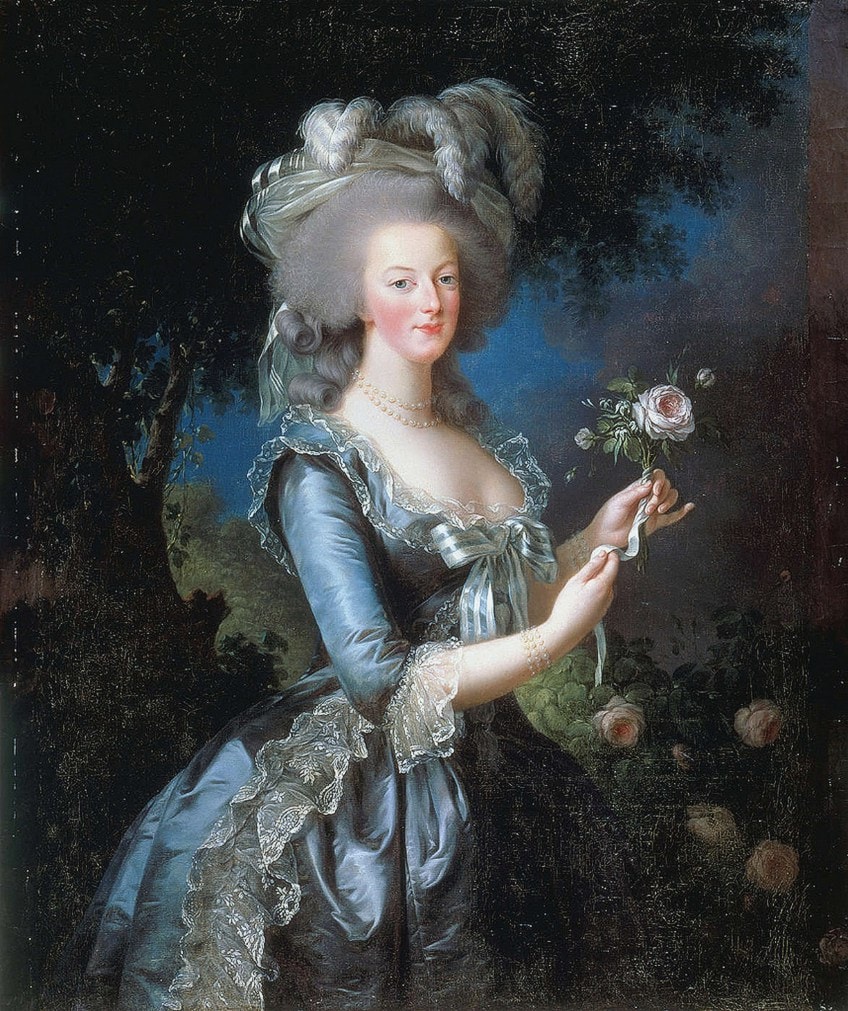
During her reign as Dauphine and then queen of France, Marie Antoinette became infamous, her reputation marred by her way of living and love for extravagance and excess. She was not admired by the public for various reasons and was also falsely accused of fraudulent behavior regarding a diamond necklace in 1785, which has famously become known as the “Affair of the Diamond Necklace”.
Although Marie Antoinette was not involved in the scandal, her reputation was significantly impacted, if not destroyed. This led to efforts to restore it by focusing on her more positive and relatable qualities like her motherhood. This was when King Louis XVI commissioned Élisabeth Vigée le Brun to paint Marie Antoinette with all her children.
However, although le Brun wanted to paint the queen in a gracious light, the painting has also been described as a form of propaganda, intended to give the queen and thus the royal family a less tarnished public image.
With the onset of the French Revolution, the royal family attempted to flee the country, but they failed in their efforts and what happened to Marie Antoinette and King Louis XVI was the end of their royal reign; they were both arrested and found guilty of treason and conspiracy. The King was sentenced to death and guillotined in January 1793 and the queen was put on trial by the Revolutionary Tribunal and guillotined in October 1793.

Le Brun Becoming the French Court Painter
Élisabeth Vigée le Brun was already known by the French Royal Court when she was commissioned to paint Marie Antoinette’s family portrait. According to scholarly sources Marie Antoinette heard of le Brun due to her successful reputation as a portrait artist in France and commissioned her to paint various portraits of her.
It is important to note that Queen Marie Antoinette did not commission le Brun on her own accord to paint the family portrait.
Instead, it was commissioned by the King’s Bâtiments du Roi, otherwise translated as the “King’s Buildings”, which was part of the overall Maison du Roi, which means “The King’s Household”. The King’s Buildings was given the responsibility to oversee various building projects and public works regarding the “royal residences”, which also included maintenance. It also oversaw various modalities of the arts and their creation, which included architecture, sculpture, and paintings. Additionally, porcelain and tapestries were also included.

Le Brun’s painting style was favored by the queen, and there were apparently over 30 Marie Antoinette portrait paintings done, some of the queen alone and some with her family. Examples include Archduchess Marie Antoinette, Queen of France (1778), Marie Antoinette in a Chemise Dress (1783), and Marie Antoinette with a Rose (1783), to name a few.
By the time that le Brun painted Marie Antoinette and her children, she undoubtedly had a level of exposure to the royal family that not many would have had, and she was tasked with the role of portraying the queen in a new light, so to say, employing various formal elements to create what has been known as a masterpiece of French painting.
Exhibiting the Queen
When it came to the exhibition of the painting, which was at the Paris Salon in August of 1787, le Brun did not want to put it on display out of fear of its reception. However, the painting was exhibited and received both positive and negative critiques.
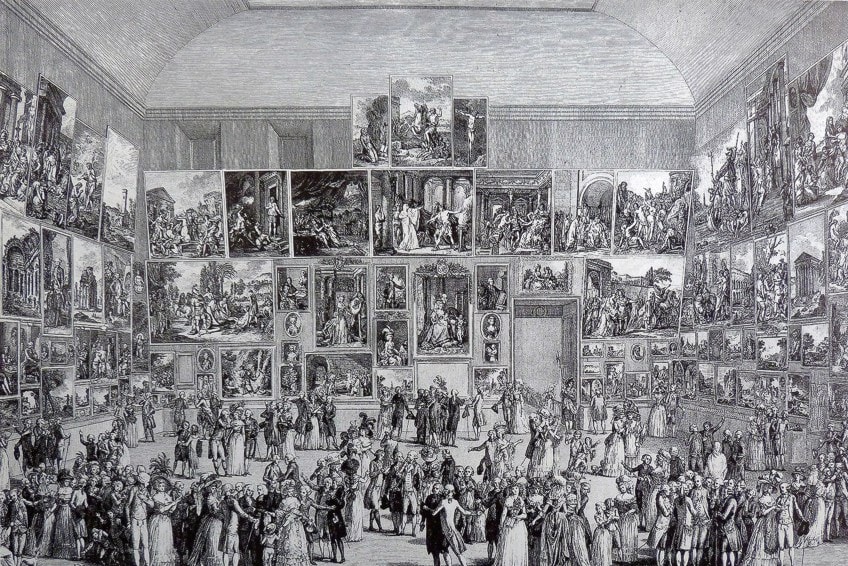
Some of the critiques about the painting centered around the queen’s appearance, some sources quote responses that stated, “it is complained that the queen has no intention in her looks”. Reportedly, others also expressed curiosity about the empty cradle in the painting.
Le Brun also explained in her memoir how nervous she was about sending the painting to the exhibition, and when she did, she was so “afraid” of the public’s review that she fell “ill with fright”, but she stated that her brother and several friends reassured her that it was “met with universal acclaim”.
Symbolism: There Is More to Marie Antoinette
There is more to this Marie Antoinette painting than meets the eye, reportedly it has significant symbolism attached to it. For example, le Brun received advice from the French, Neoclassical, artist, Jacques-Louis David in terms of the layout of the composition.
Marie Antoinette and her children are depicted according to the religious and historical style of paintings that utilized a triangular/pyramidal layout, notably for depictions of the “Holy Family” during the Renaissance period, think about paintings of the Virgin Mary and Jesus Christ, for example, Leonardo da Vinci’s Virgin of the Rocks (c. 1483-1486).

However, an artist more often referred to is Raphael and his painting titled Madonna of the Meadow (Madonna del Prato) (1506). This painting depicts the Virgin Mary with two infants, namely, Jesus Christ to our right and John the Baptist to our left. We see here how the Virgin Mary gazes at John the Baptist while he looks at Jesus’s figure. Through the direction of the three figures’ gazes, there is a pyramidal format created between them.
Undoubtedly, portraying Marie Antoinette in a similar layout would have placed, or attempted to place, her within the scope of innocence and purity as a mother figure, and not someone who was involved in fraudulent behavior or wholly preoccupied with riches.
This notion is further hinted at by the jewelry cabinet, otherwise referred to as the “jewelry armoire”, to Marie Antoinette’s left (our right), which alludes to the ancient Roman story about Cornelia and her two sons, known as the Gracchi brothers, namely Tiberius and Gaius Gracchus.

Cornelia received a visitor to her home who offered her jewelry, she was also asked to show her jewels in the process, and she pointed out her two sons who were her jewels. We see this similar idea in the Marie Antoinette painting by the way the French queen is focused on her children and the jewelry cabinet is placed more into the shadows, not given any focus at all.
Additionally, the queen is not wearing any luxurious jewelry on herself either, giving the impression that her children are more important, or are her jewels.
Marie Antoinette’s dress is another reference to Queen Marie Leszczyńska, who was the wife of King Louis XV and known for her philanthropy. She also had numerous portrait paintings done, for example, the Portrait of Marie Leszczyńska (1748) by the French Jean-March Nattier, which depicts the queen in a red dress, the same red as the dress worn by Queen Marie Antoinette, furthermore, the dress itself is also similar.
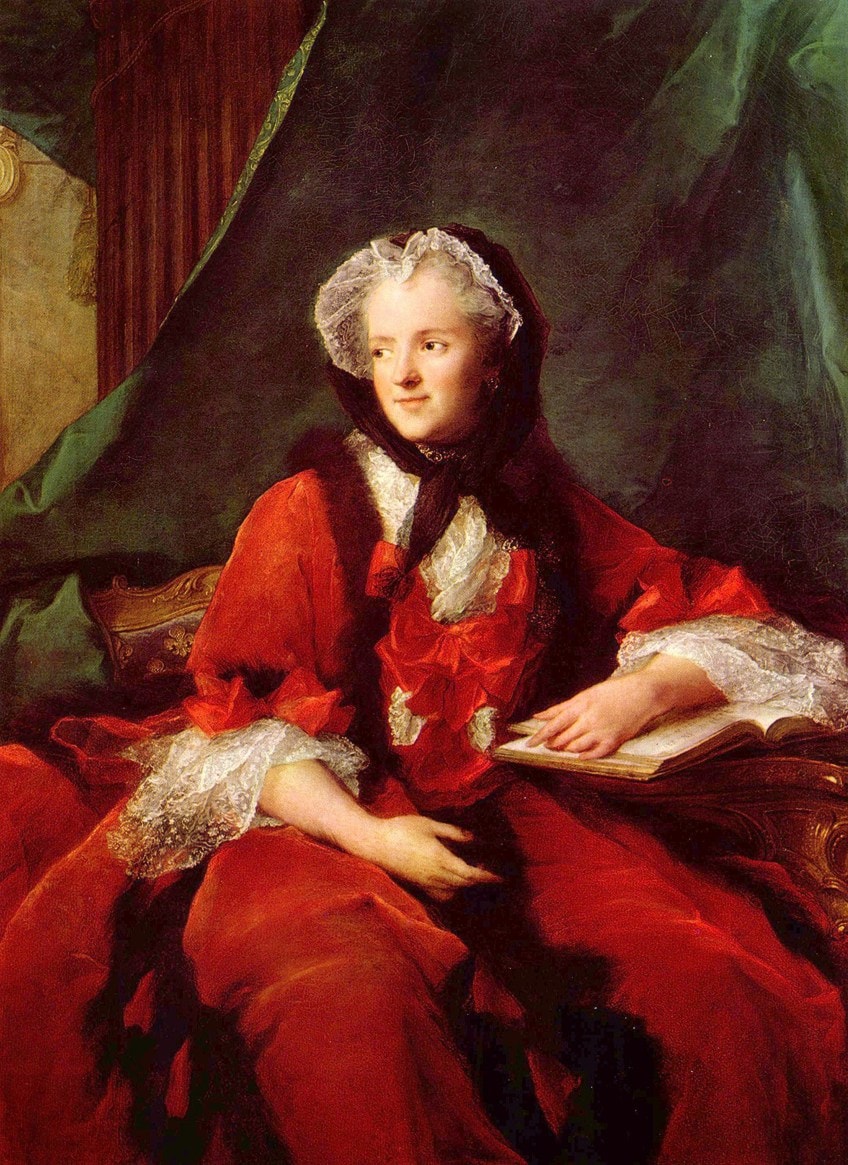
Formal Analysis: A Brief Compositional Overview
Below we will discuss the Marie Antoinette family portrait by Élisabeth Vigée LeBrun in more detail, looking at the subject matter and various formal elements that gave this French painting its beauty beyond the political and social subtexts that surrounded it.
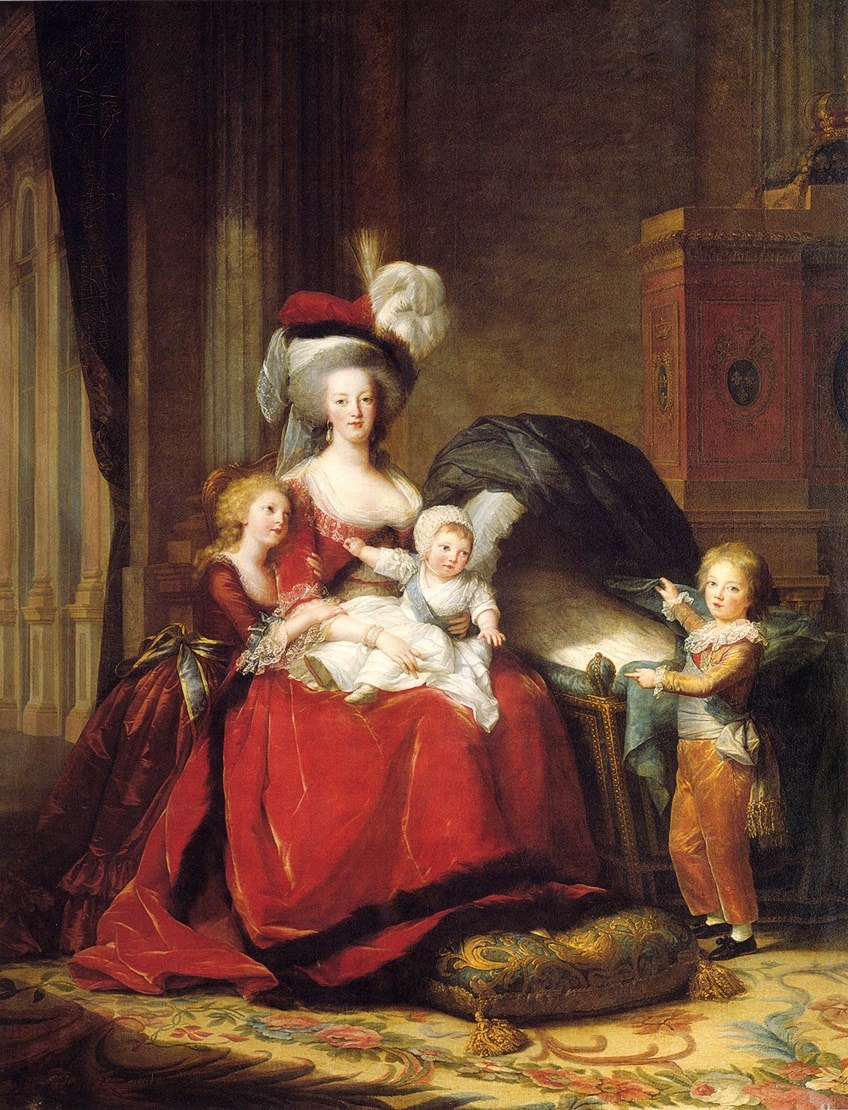
Subject Matter
If we look at the Marie Antoinette family portrait by Élisabeth Vigée le Brun, we see Marie Antoinette as the central figure. She is wearing a red velvet gown and wig and is seated with her three children surrounding her.
Sitting on her lap is her youngest son Louis XVII, who is gazing to his left, standing to her right (our left) and holding on to Marie Antoinette’s right arm, is her daughter Marie-Thérèse; she lovingly gazes up at her mother while also resting her head on her mother’s right arm.
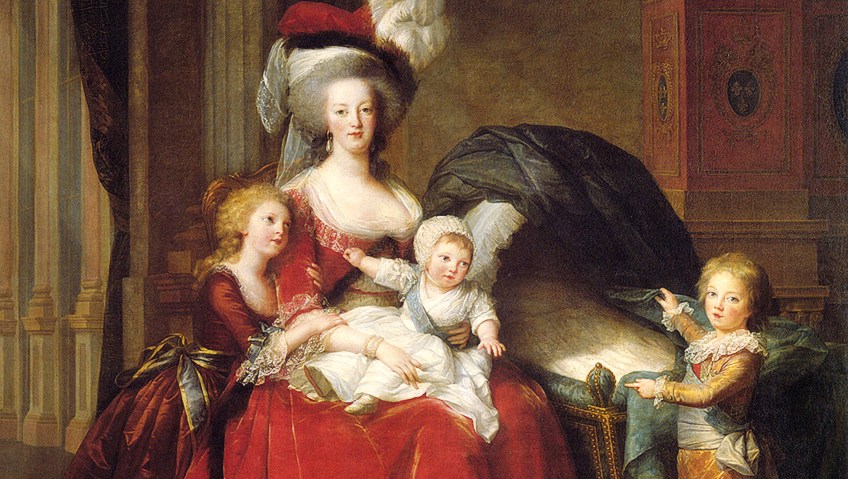
The elder son Louis-Joseph stands slightly removed from the rest; he is to the queen’s left (our right) and holds on to a piece of cloth covering a cradle, partially opening it to reveal that it is empty. He is directly gazing at us, the viewers. The cradle is situated next to Queen Marie Antoinette, her left (our right), and it is a reference to her daughter Sophie-Béatrice who died of Tuberculosis at less than a year old in 1787, the same year this Marie Antoinette portrait was painted.
Further to our right, next to the cradle, is a jewelry cabinet, which stands more in the shadows of the composition, recalling the symbolic story of the Roman mother Cornelia mentioned earlier in the article.
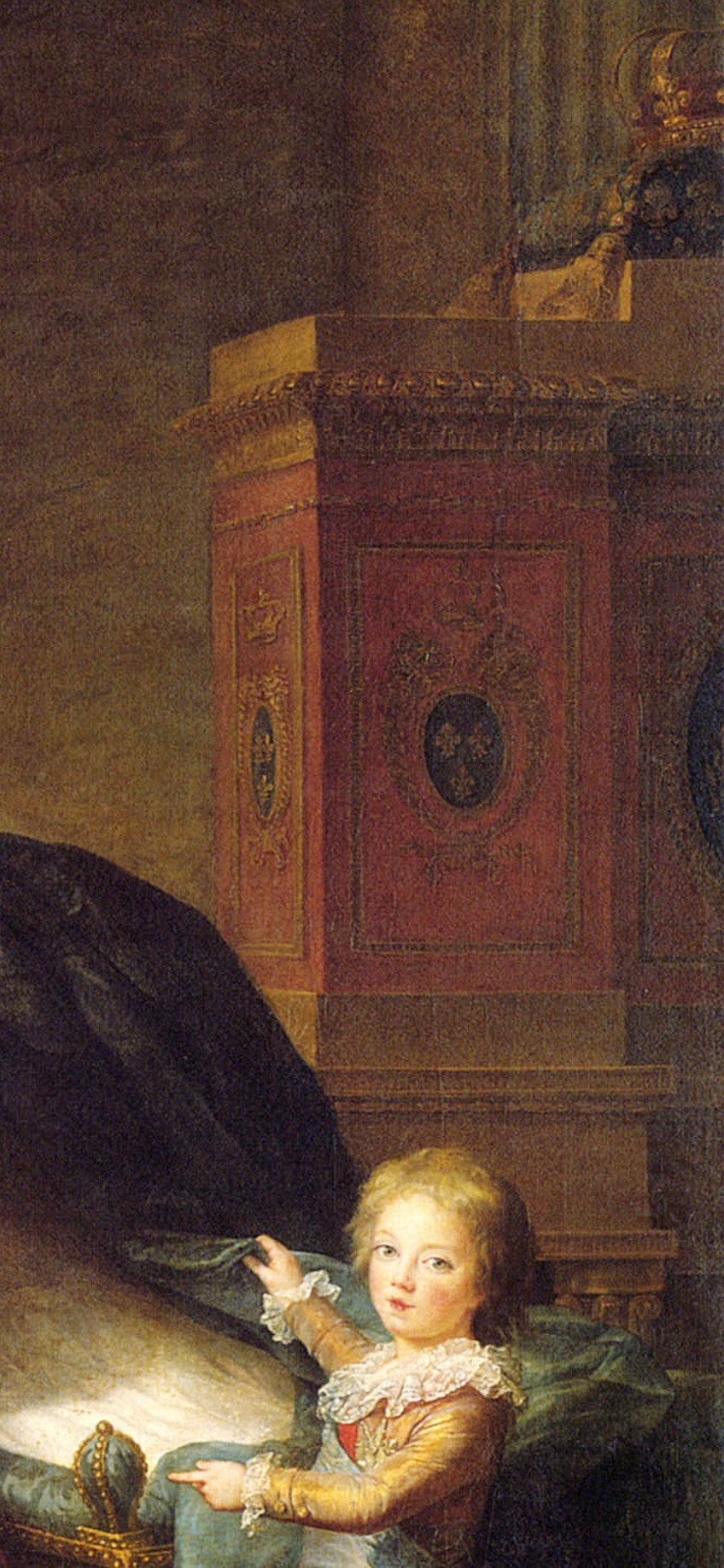
To our left in the composition, behind Marie Antoinette is a large opening that leads into another room or what appears to be a hallway. This is reportedly the famous Hall of Mirrors, which has been referred to as a tribute to King Louis XIV.
The Hall of Mirrors is widely known and described as the “most famous room” in the Palace of Versailles. It depicts the conquests of King Louis XIV, and it was also utilized for various celebrations.
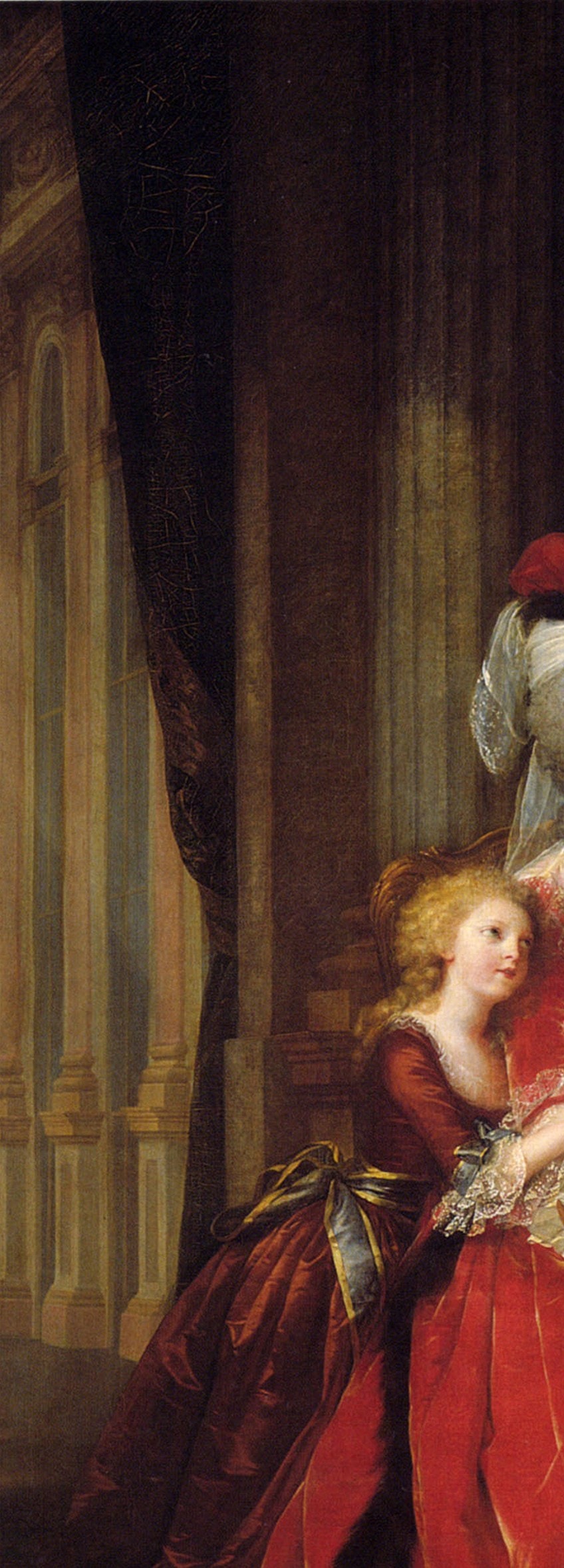
Throughout the composition, we will notice various architectural elements, lavish clothing, drapery, a propped-up cushion under the queen’s feet, and an arabesque patterned rug in the foreground. The material ranges from velvets, notable on the royal figures’ clothing, as well as laces and silks.
Color
Vigée le Brun utilized a soft application of colors in the Marie Antoinette painting with rich warm colors like red from the queen’s as well as Marie-Thérèse’s red gowns, orange from Louis-Joseph’s outfit, and some pinks, visible in the rug.
We will also notice cooler colors like greens and blues.
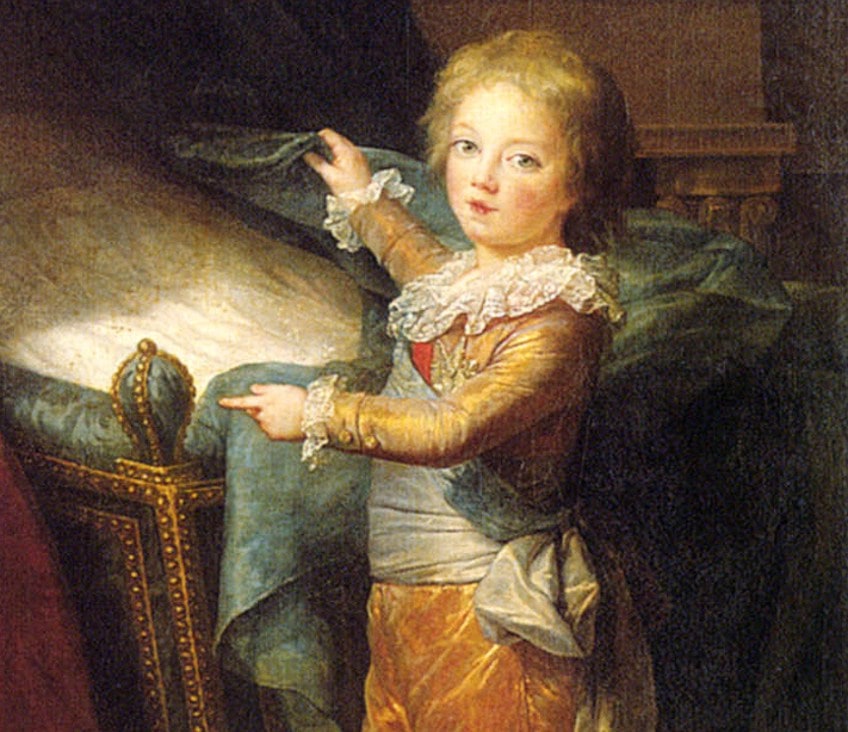
This can be seen in the blue ribbon around Marie-Thérèse’s gown, the green shade from the cradle’s cover, the blue around Louis-Joseph, the green from the cushion under the queen’s feet, as well as the blues on the rug and light blues in the background along the wall in the Hall of Mirrors. Scattered here and there are whites, such as the white outfit worn by Louis XVII, the white feathers atop Marie Antoinette’s headpiece, as well the white from the lace on the figures’ outfits.
Browns and beiges from the rug and furniture also create soothing tones.
Light
There is a distribution of light and dark in the Marie Antoinette painting, there is an unknown light source seemingly coming from the left side in the background, possibly from the Hall of Mirrors, which highlights the figures in the foreground. We will notice how the light moves from the back all the way to the front, over the rug.
This light also casts distinctive shadows in the rest of the room, notably the visible line between light and shadow in the bottom left corner over the rug and the shadowed area of the jewelry armoire to our right.

Fit for a Queen
While the events of the French Revolution brought the royal reign to an end and Queen Marie Antoinette’s reputation seemingly preceded her and led her to her demise, she was nonetheless the subject of numerous French paintings, bedecked in decadence and splendor and le Brun’s artistic style contributed to this.
The queen favored her as a portraitist, and she was reportedly also supported by the royal family to gain entrance as a member of the Académie royale de peinture et de sculpture, however, due to the events of the French Revolution, le Brun fled France with her daughter and governess.
Le Brun was away from France for over 10 years and traveled and work in Italy, Austria, Russia, and Germany; she continued painting portraits of various other Royal figures and returned to France in 1802. Her prowess as a French painter paved the way for her artistic career, and although she was not royalty herself, she was indeed fit for a queen.
Take a look at our Marie Antoinette portrait webstory here!
Frequently Asked Questions
Who Painted the Famous Marie Antoinette Family Portrait?
The French artist Élisabeth Louise Vigée le Brun painted the famous Marie Antoinette portrait with the queen and her three children. It was painted in 1787 and titled Marie Antoinette and Her Children, but also referred to as Marie Antoinette of Lorraine-Habsburg, Queen of France, and Her Children.
Who Was Marie Antoinette?
Marie Antoinette was the Dauphine and queen of France. She was originally named Maria Antonia and was born in Vienna, Austria. She was married by proxy to the French Louis XIV, who became King of France, both were known as the last king and queen of France during the 18th century.
What Happened to Marie Antoinette?
Marie Antoinette was arrested during the French Revolution and trialed by the Revolutionary Tribunal in October 1793. After she was found guilty of various crimes like treason, she was sentenced to death by the guillotine in the same month.
Where Is the Marie Antoinette Family Portrait by Élisabeth Vigée le Brun?
The family portrait Marie Antoinette and Her Children (1787) is housed in the collections at the Palace of Versailles in France.
Isabella studied at the University of Cape Town in South Africa and graduated with a Bachelor of Arts majoring in English Literature & Language and Psychology. Throughout her undergraduate years, she took Art History as an additional subject and absolutely loved it. Building on from her art history knowledge that began in high school, art has always been a particular area of fascination for her. From learning about artworks previously unknown to her, or sharpening her existing understanding of specific works, the ability to continue learning within this interesting sphere excites her greatly.
Her focal points of interest in art history encompass profiling specific artists and art movements, as it is these areas where she is able to really dig deep into the rich narrative of the art world. Additionally, she particularly enjoys exploring the different artistic styles of the 20th century, as well as the important impact that female artists have had on the development of art history.
Learn more about Isabella Meyer and the Art in Context Team.
Cite this Article
Isabella, Meyer, “Marie Antoinette Family Portrait by Élisabeth Vigée le Brun.” Art in Context. April 19, 2022. URL: https://artincontext.org/marie-antoinette-family-portrait-by-elisabeth-vigee-le-brun/
Meyer, I. (2022, 19 April). Marie Antoinette Family Portrait by Élisabeth Vigée le Brun. Art in Context. https://artincontext.org/marie-antoinette-family-portrait-by-elisabeth-vigee-le-brun/
Meyer, Isabella. “Marie Antoinette Family Portrait by Élisabeth Vigée le Brun.” Art in Context, April 19, 2022. https://artincontext.org/marie-antoinette-family-portrait-by-elisabeth-vigee-le-brun/.





